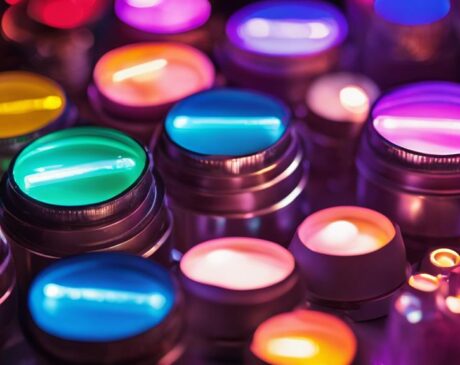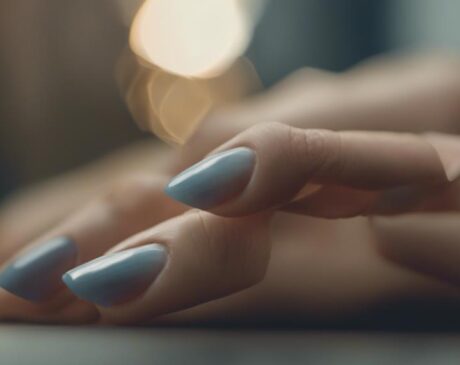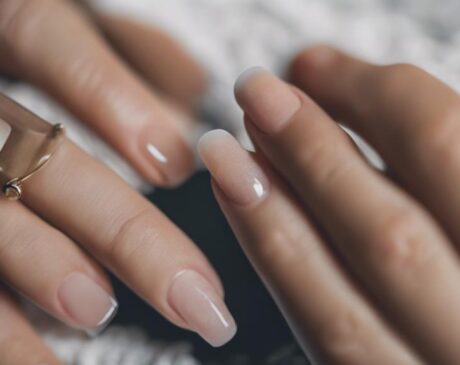Does Cold Water Dry Gel Nail Polish?
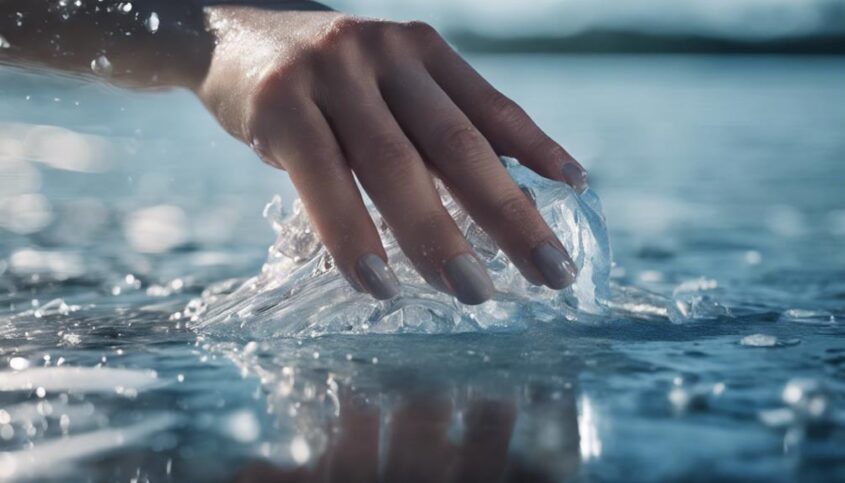
Cold water doesn't dry gel polish; UV or LED light is needed for a proper cure. Gel polish has special components that require specific light exposure for drying. Cold water won't help your manicure set. To avoid chipping, follow the curing instructions carefully. If you want to understand why, keep exploring the factors that affect gel drying.
Key Takeaways
- Cold water alone does not dry gel nail polish.
- Gel polish requires UV or LED lamp for proper curing.
- Proper curing prevents chipping or peeling.
- Gel polish consists of ingredients needing light for drying.
- Following manufacturer's curing instructions is crucial.
The Myth of Cold Water Drying
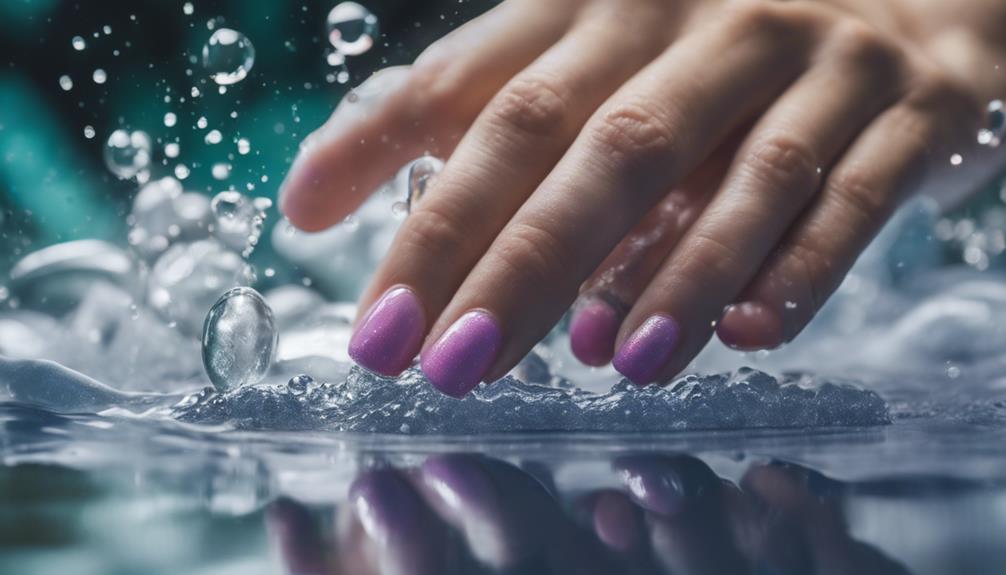
You might've heard that placing your freshly painted gel nails in cold water can speed up the drying process, but this is actually a common misconception. The idea behind this myth is that the cold water would cause the polish to harden faster, but in reality, gel nail polish requires a specific curing process using a UV or LED lamp to dry properly. Cold water alone won't provide the necessary light or chemical reaction to set the gel polish.
To ensure your gel nail polish dries efficiently, follow the manufacturer's instructions for curing times under the lamp. Trying to speed up the process with cold water may result in an uneven or incomplete cure, leading to chipping or peeling sooner than expected. Patience is key when it comes to achieving long-lasting, salon-quality nails.
Gel Nail Polish Composition
When considering gel nail polish composition, you'll find that it typically consists of a mix of oligomers, monomers, and photoinitiators. These ingredients work together to create a durable, long-lasting manicure.
Understanding how these components interact can shed light on why cold water isn't a reliable method for drying gel nail polish.
Gel Polish Ingredients
Exploring the composition of gel nail polish reveals a precise blend of ingredients that contribute to its long-lasting and durable nature. Gel polish typically consists of a mix of oligomers, monomers, and pigments that provide the color and strength to your manicure. These ingredients work together to create a resilient layer that resists chipping and peeling, giving you the freedom to enjoy your vibrant nails for an extended period.
Additionally, photoinitiators are included in the formula to help the polish cure and harden under UV or LED light. Understanding these key components can help you appreciate the technology behind gel nail polish and how it delivers that flawless, chip-free look you desire.
Effect of Cold
The cold temperature can impact the composition of gel nail polish, potentially altering its consistency and curing properties. When gel nail polish is exposed to cold temperatures, it may become thicker, making it harder to apply smoothly. This change in consistency can affect the overall look and durability of your manicure.
Additionally, the curing process of gel polish may be affected by the cold, leading to improper drying and potential chipping or peeling. To prevent these issues, store your gel nail polish in a cool, but not cold, place and allow it to acclimate to room temperature before use.
Drying Process
To ensure proper drying of gel nail polish, it's crucial to understand how its composition affects the curing process. Gel polish contains photoinitiators that react to UV or LED light to harden the polish. These photoinitiators are sensitive to specific wavelengths of light, ensuring the polish cures effectively.
Additionally, the gel polish formulation includes oligomers, monomers, and pigments that contribute to its durability and color vibrancy. When exposed to the correct light wavelength, these components undergo a polymerization reaction, bonding together to form a strong and glossy finish.
Understanding the composition of gel nail polish is essential for achieving long-lasting and vibrant nail color. Make sure to follow the curing instructions carefully to enjoy beautiful gel nails that last.
How Heat Affects Gel Polish
When it comes to gel polish, heat can have a significant impact on how it dries on your nails. Higher temperatures can accelerate the curing process of gel polish, leading to quicker drying times.
However, excessive heat can also cause gel polish to become runny or not cure properly, affecting the overall quality of your manicure.
Heat and Gel Polish
Exposure to heat can significantly impact the longevity and appearance of gel polish on your nails. High temperatures can cause gel polish to soften, leading to chipping, peeling, or a dull finish. When exposed to heat sources like hot water, steam rooms, or direct sunlight, the gel polish may not adhere as well to the nails, affecting its durability.
Additionally, heat can alter the texture of the gel polish, making it more prone to smudging and losing its shine. To maintain your gel polish looking fresh and lasting longer, try to avoid prolonged exposure to extreme heat. Remember, a little care can go a long way in preserving your fabulous gel manicure.
Impact on Drying
High temperatures can impact the drying process of gel polish, affecting its longevity and appearance on your nails. When exposed to heat, gel polish tends to cure faster, potentially leading to uneven application or bubbles forming on the surface. This rapid drying can make it challenging to achieve a smooth, flawless finish.
Additionally, excessive heat can cause the gel polish to shrink or wrinkle, compromising the overall look. To ensure the best results, it's essential to apply gel polish in a cool, well-ventilated area to control the drying process.
Understanding Gel Nail Curing
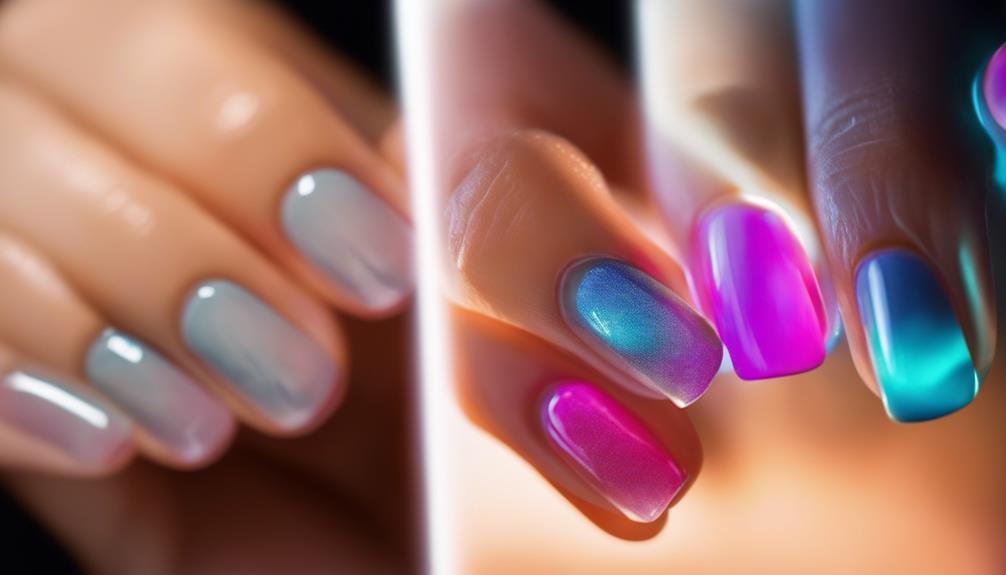
To achieve the perfect gel nail finish, understanding how gel nail curing works is essential. Gel nail curing is the process where the gel nail polish hardens and sets in place. This happens through a chemical reaction initiated by exposure to a UV or LED light source. When the gel polish is applied to your nails, the molecules in the polish react to the light, forming long chains that create a durable and glossy finish.
During the curing process, the light activates photoinitiators in the gel polish, which then kick-start the polymerization process. This reaction causes the gel polish to harden and adhere to your nails. The exposure time to the light source is crucial, as it determines how well the gel polish cures. Insufficient exposure can result in the gel nail polish not fully hardening, leading to chipping and peeling.
Understanding gel nail curing helps you appreciate the importance of proper curing times and techniques to achieve long-lasting and beautiful gel nail finishes.
Factors Influencing Drying Time
When it comes to gel nail polish drying time, various factors can play a role. Factors like the thickness of the layers, the brand of gel polish used, and even the curing lamp's strength can affect how quickly your gel nails dry.
Additionally, the temperature of the water used in the curing process may impact the final drying time of your gel nail polish.
Factors Affecting Drying Time
Factors that influence the drying time of gel nail polish include the thickness of the application and the curing method used. When you apply a thicker layer of gel polish, it takes longer to cure fully. Opting for thinner coats can speed up the drying process.
Additionally, the type of curing method you choose plays a role. LED lamps typically cure gel polish faster than UV lamps. The wattage of the lamp can also impact drying time. Higher wattage lamps tend to cure gel polish more quickly.
Effect of Water Temperature
Adjusting the water temperature can significantly impact the drying time of gel nail polish. Here's how different water temperatures can affect the process:
- Cold Water: Submerging your nails in cold water can slow down the drying process, causing the gel polish to take longer to set.
- Room Temperature Water: Using water at room temperature provides a neutral environment for drying, allowing the gel polish to cure at a standard pace.
- Warm Water: Warm water can help speed up the drying time of gel nail polish, as the heat aids in curing the polish more quickly.
- Hot Water: While hot water may seem like it would dry the polish faster, it can actually cause the gel to bubble or wrinkle, leading to an uneven finish.
Cold Water Vs. Gel Nail Drying
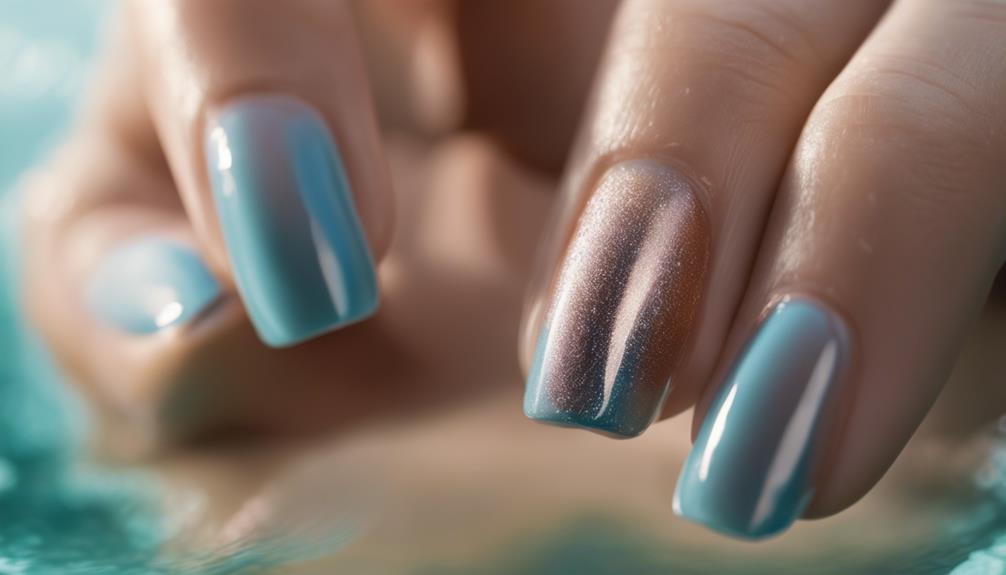
To speed up the drying process of your gel nail polish, try using cold water instead of waiting for it to air dry. After curing your gel nails under a UV or LED lamp, they may still feel tacky. Instead of sitting around twiddling your thumbs, fill a bowl with cold water and submerge your nails for a few minutes. The cold water helps to harden the gel polish faster, giving you that dry, glossy finish you crave.
Cold water can be a game-changer when it comes to drying gel nail polish. It's a quick and easy way to set your gel polish without any fuss. Plus, it can feel refreshing on a hot day. So, don't waste time watching paint dry – dip those nails in some icy water and get on with your day.
Next time you're in a rush and need your gel nails to dry in a flash, remember the power of cold water. It's a simple trick that can save you time and frustration. Give it a try and see the difference for yourself!
Tips for Quicker Drying
For quicker drying of your gel nail polish, consider implementing these efficient tips:
- Thin Layers: Apply thin layers of gel polish to help them cure faster. Thick layers take longer to dry properly.
- Use a UV/LED Lamp: Invest in a good UV or LED lamp designed for gel nail polish. These lamps can significantly reduce drying time.
- Quick-Dry Drops: After applying the topcoat, add quick-dry drops to accelerate the drying process.
- Avoid Thick Topcoats: Opt for thinner topcoats as they dry faster than thicker ones. Thicker topcoats may take longer to cure completely.
Risks of Using Cold Water
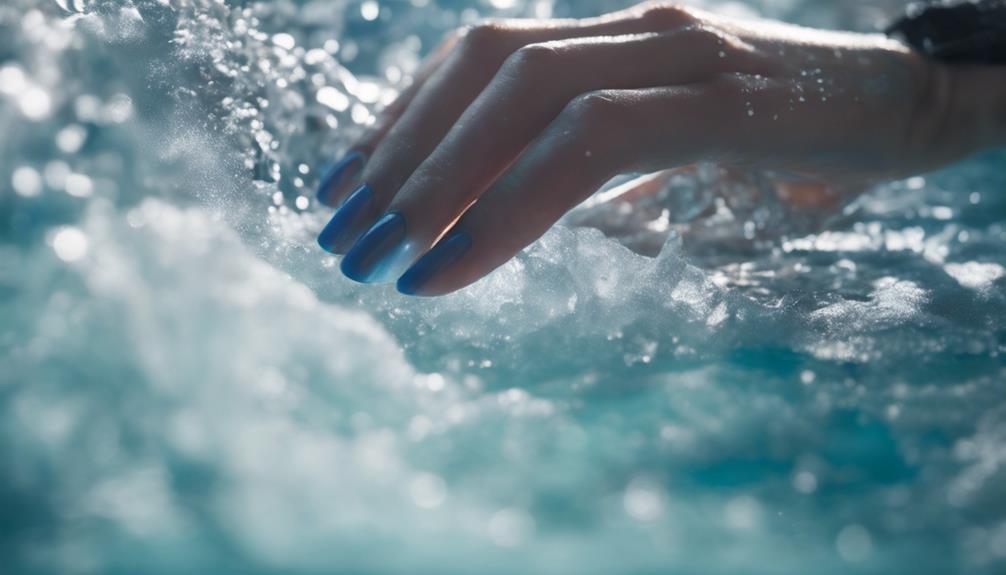
Switching to cold water for drying gel nail polish may pose certain risks that you should be aware of. While cold water can help set the polish faster, it may lead to potential issues such as uneven drying.
The sudden temperature change could cause the gel polish to harden too quickly, resulting in a lumpy or uneven finish. Additionally, exposing your nails to cold water frequently may strip them of natural oils, leading to dry and brittle nails over time.
Moreover, if the cold water is too cold, it could potentially cause discomfort or even pain, especially if you have sensitive nails or skin. It's important to consider these risks before using cold water as a drying method for your gel nail polish.
Be mindful of how your nails react to the temperature change and listen to your body to avoid any unwanted consequences.
Alternatives to Speed Drying
Consider trying out other methods to dry your gel nail polish quickly. Here are four alternatives that can help speed up the drying process:
- Quick-dry spray: Use a quick-dry spray specifically designed for gel nail polish to accelerate the drying time.
- UV or LED lamp: Invest in a UV or LED lamp, which can cure gel nail polish faster than air-drying.
- Cold-air setting on a blow dryer: Set your blow dryer to the cold-air setting and gently blow air over your nails to help them dry more quickly.
- Drying drops: Apply drying drops on top of your gel nail polish to help it set and dry faster.
These alternatives provide you with the freedom to choose the method that works best for your nail care routine. Experiment with these options to find the one that fits your preferences and helps you achieve perfectly dried gel nail polish in no time.
Expert Recommendations and Insights
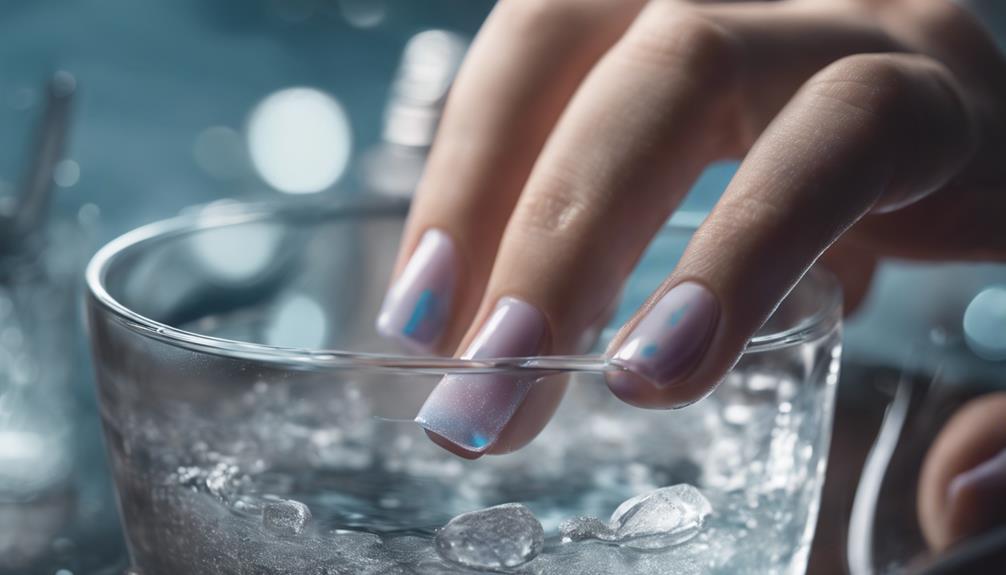
Expert nail technicians highly recommend incorporating a UV or LED lamp into your gel nail polish drying routine for efficient and long-lasting results. These lamps are designed to cure gel polish effectively, ensuring a durable finish that resists chipping and peeling. By using a UV or LED lamp, you can significantly reduce the drying time compared to air drying alone. This method not only saves you time but also guarantees a professional-looking manicure that lasts for weeks.
In addition to using a curing lamp, experts suggest applying thin layers of gel polish to ensure proper drying and adhesion. Thick layers can lead to uneven curing and may result in premature chipping. By following this advice, you can achieve a flawless gel manicure that withstands daily activities without losing its shine.
Frequently Asked Questions
Can Cold Water Actually Damage Gel Nail Polish?
Cold water won't damage gel nail polish, but it can cause it to lift or peel prematurely. To preserve your manicure, avoid prolonged water exposure. For longevity, use gloves while doing dishes or engaging in water activities.
Are There Any Long-Term Effects of Using Cold Water to Dry Gel Nail Polish?
Using cold water to dry gel nail polish might lead to weakening the bond between the polish and the nail over time. It's advisable to stick to recommended methods for long-lasting results and healthy nails.
What Are Some Common Misconceptions About Drying Gel Nail Polish With Cold Water?
Common misconceptions about drying gel nail polish with cold water include the belief that it speeds up the process significantly. In reality, while it may help a bit, it's not a miracle worker.
Is There a Specific Temperature of Water That Works Best for Drying Gel Nail Polish?
For drying gel nail polish effectively, water temperature matters. Optimal results usually come from using lukewarm water. Cold water isn't the magic fix; it's more about technique and patience. Experiment and find what works best for you!
Are There Any DIY Methods That Can Help Speed up the Drying Process of Gel Nail Polish Besides Using Cold Water?
To speed up gel nail polish drying, try DIY methods like using a fan, ice water, or quick-dry drops. Experiment with different techniques until you find what works best for you. Enjoy the freedom to personalize your nail care routine!

